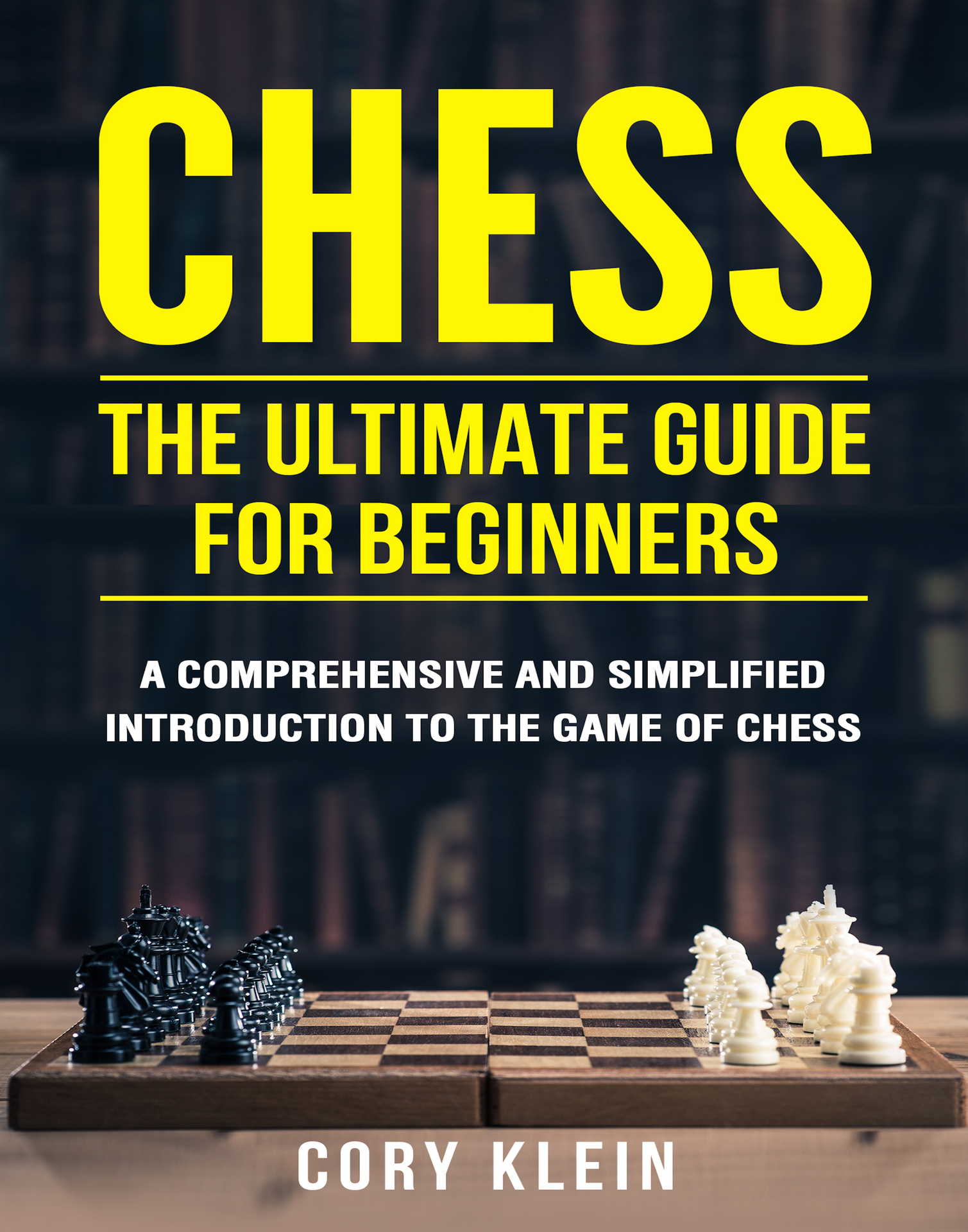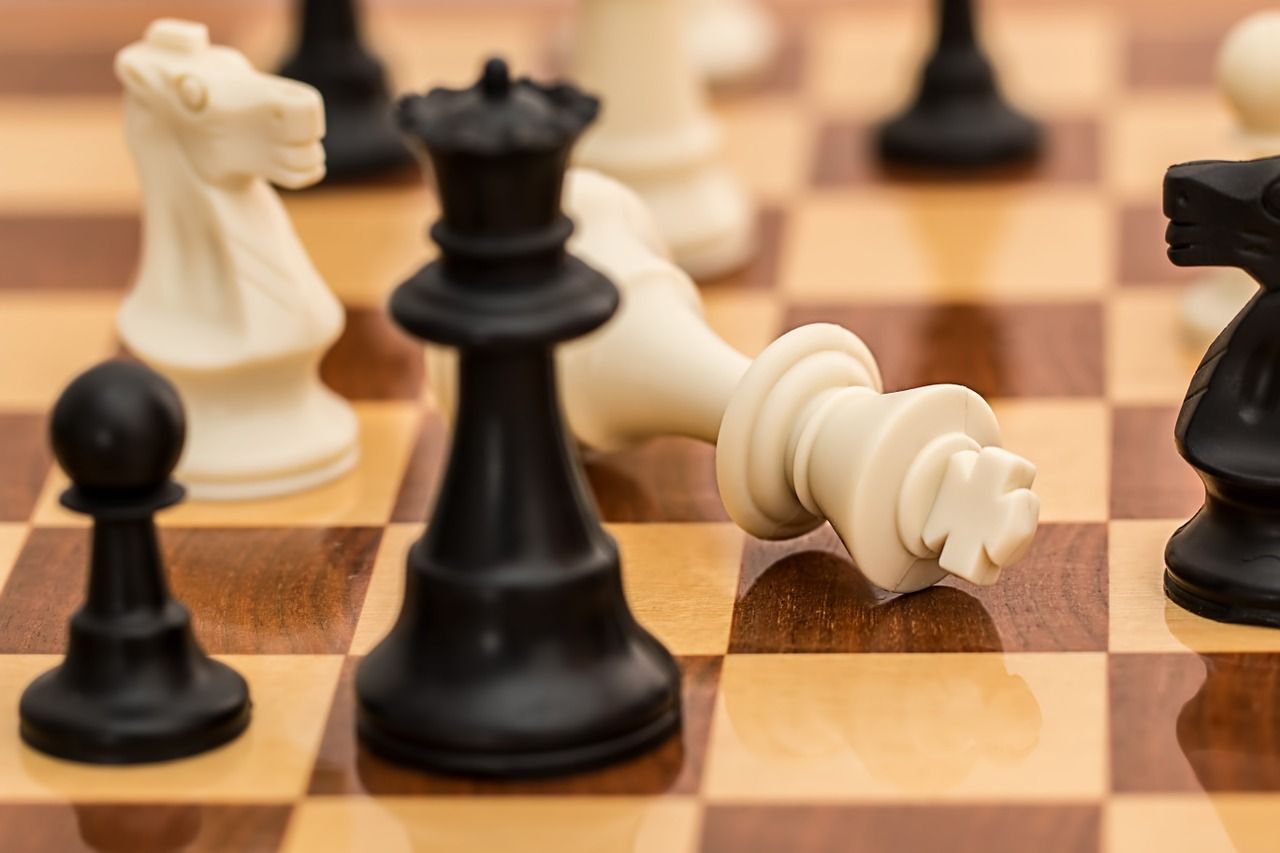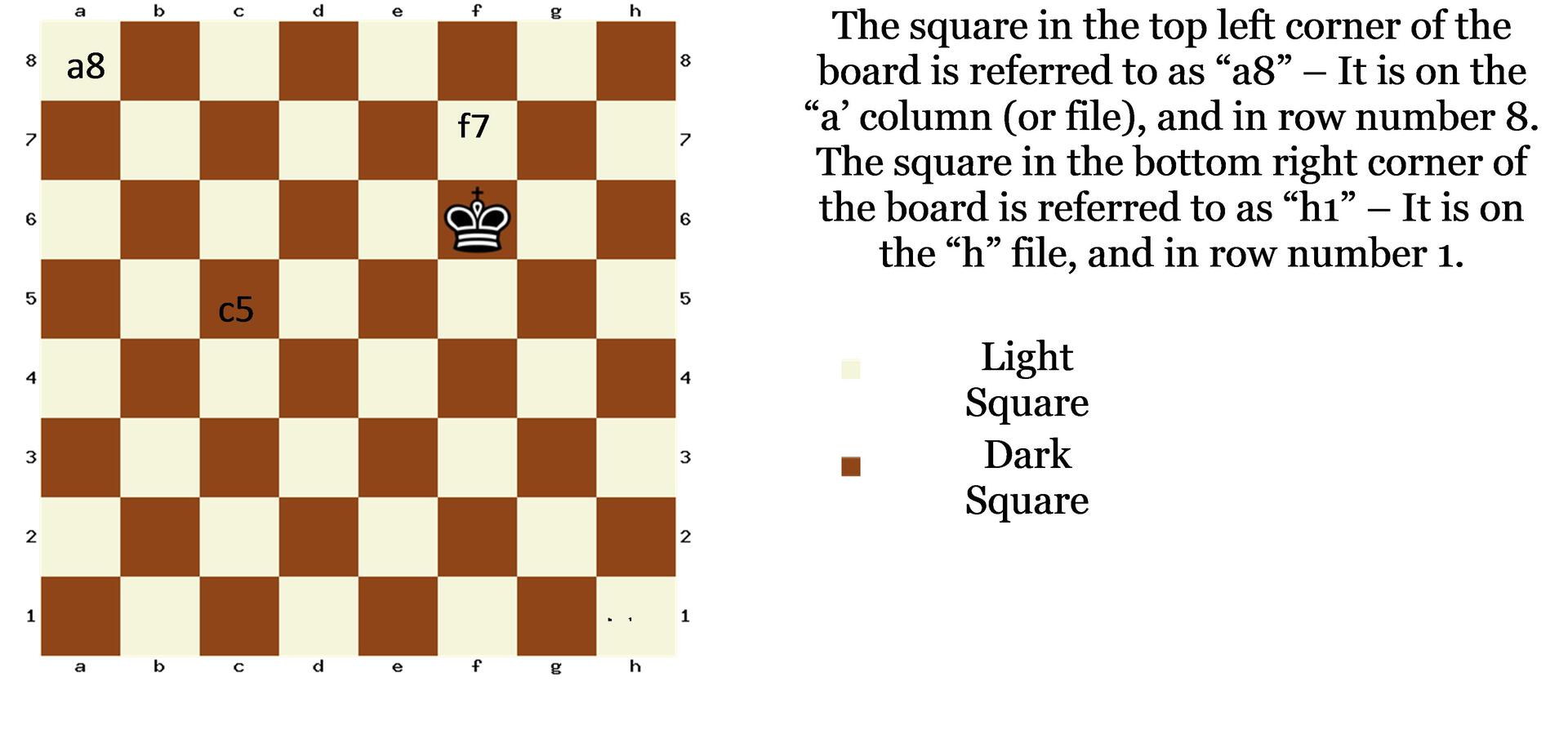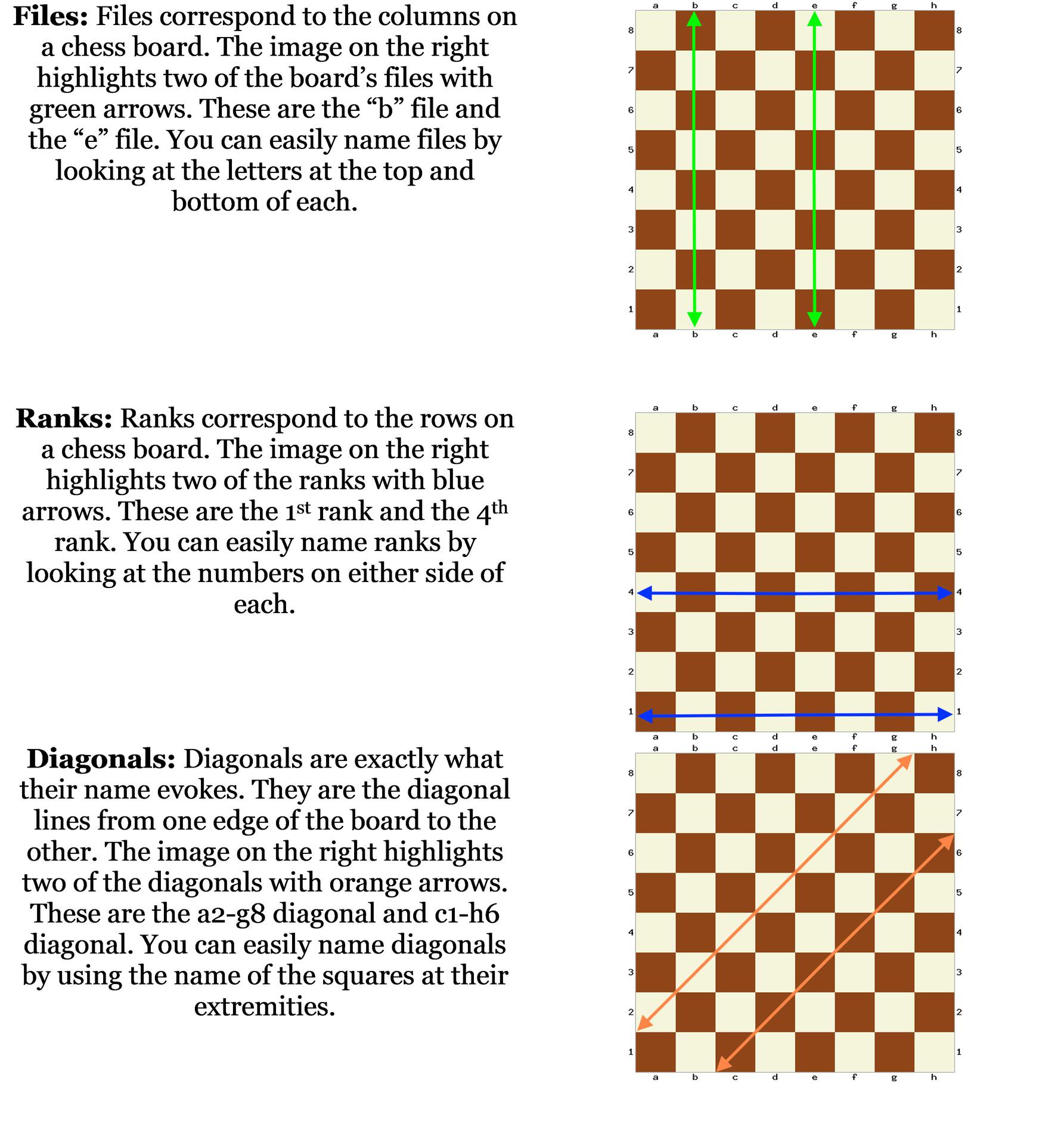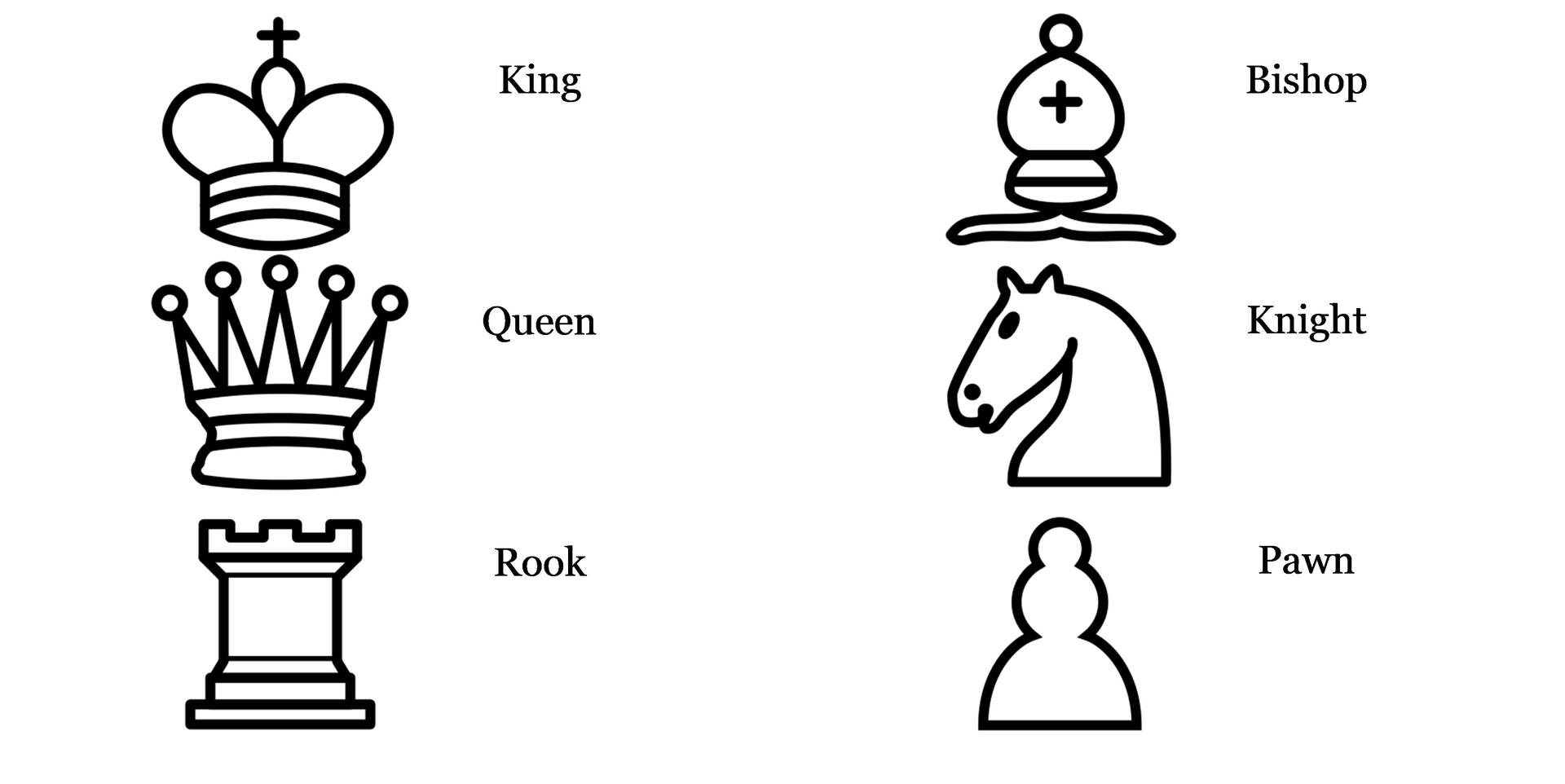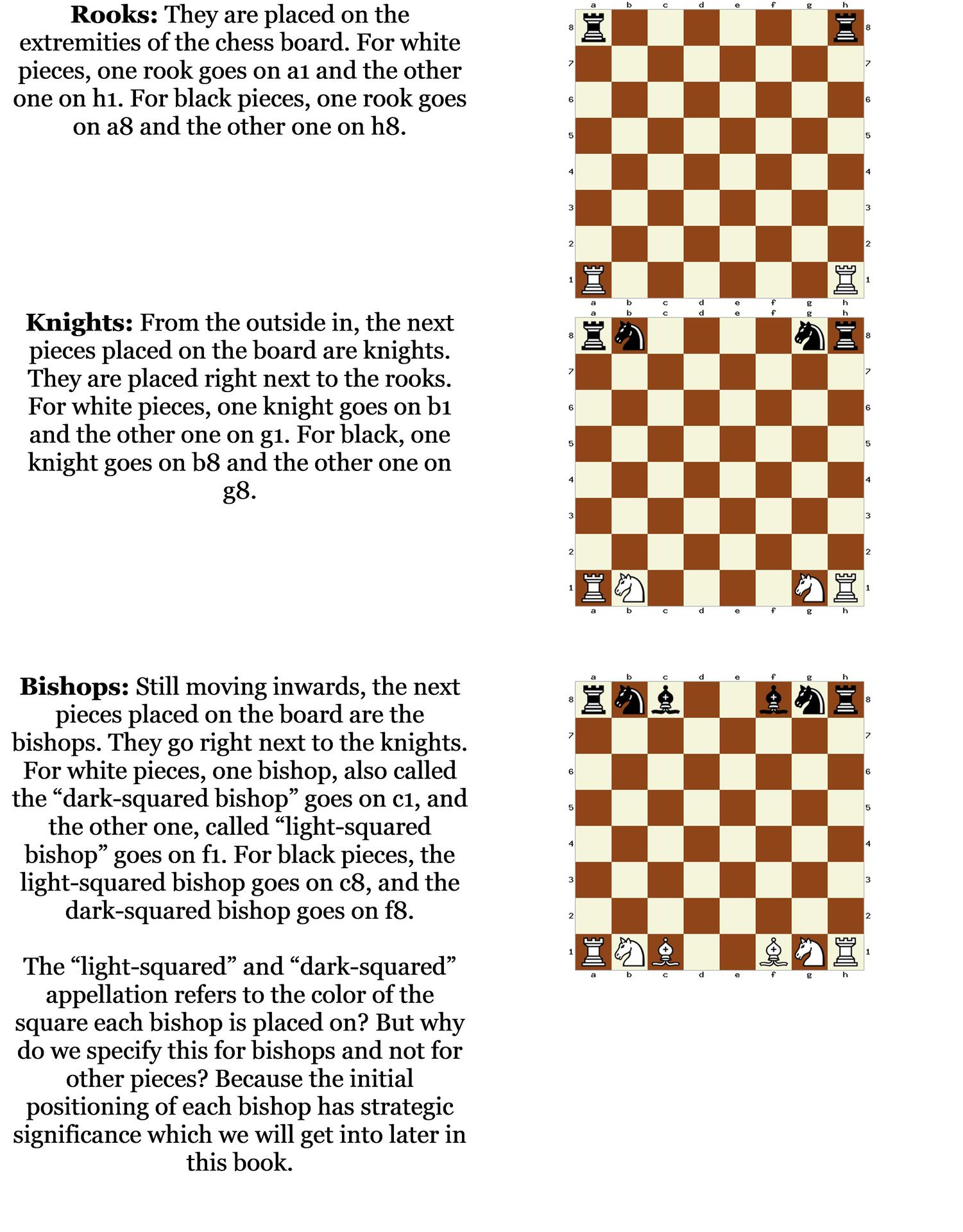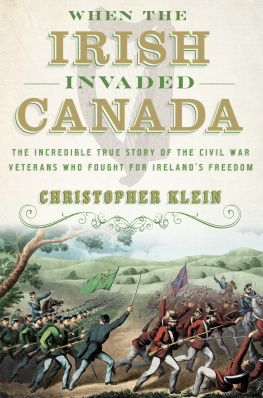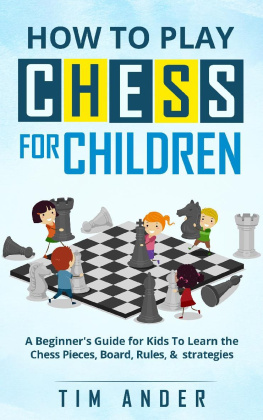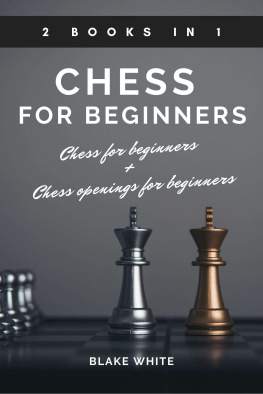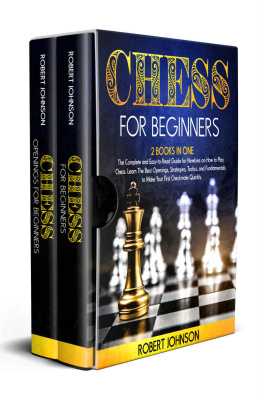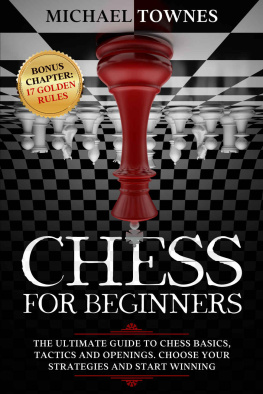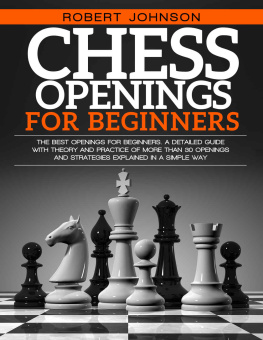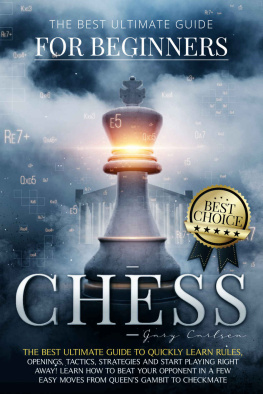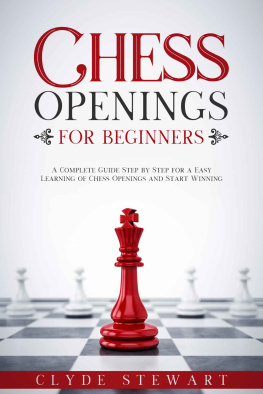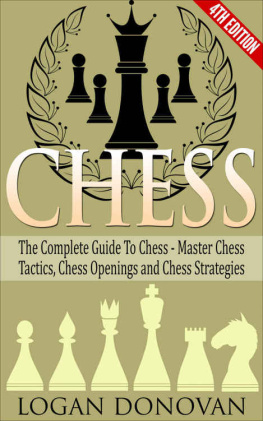CHESS: THE ULTIMATE GUIDE FOR BEGINNERS
A Comprehensive and Simplified Introduction to the Game of Chess
Cory Klein
Copyright 2017 by Cory Klein
All Rights Reserved. No part of this publication can be reproduced in any form or by any means including scanning, photocopying, or otherwise, without prior written permission of the copyright holder.
Table of Contents
Introduction: What is chess? Why play it?
All I want to do, ever, is play chess. Bobby Fischer
As you probably know, chess is a two-player strategy game played on a checkered board. Many believe it originated in India, around the 6th century. It has been played all around the world ever since. But were not here to learn about the history of chess, were here to learn how to play it.
So why play chess? Chess is a game that is as entertaining as it is intellectually challenging. If you like puzzles, riddles, problem solving, and logic teasers, you will get a lot of pleasure out of playing the game of chess. Chess will also give you a lot of pleasure if you dont like any of the above. Moreover, although chess is often associated with logical thinking, it also has an artistic side. Throughout the history of this beautiful game, many Grandmasters have been acclaimed for their unconventionally entertaining chess styles which comprised unexpected combinations, and brilliant piece sacrifices. But we will get more into that later in the book. My point is, chess is not just a game for nerds. Its a game for everyone who enjoys creativity, which most people do.
Is chess hard? Very! Is it complicated to learn? Not as complicated as people believe it to be. Understanding basic rules of the game is actually quite simple and wont take you too long. Whats hard about learning chess is becoming a decent player. Because of the infinite number of moves one can make at each turn, it can take a while to be able to play a decent game of chess. It requires knowledge of chess strategies, tactics, dos and donts, recognition of specific playing patterns, and understanding of opening and endgame theory, all of which you will learn about in this book.
However, there is no better way to learn the game than to play it. The more you play, the more you improve the quality of your game. You become a good chess player by making mistake over mistake, and learning from each of one them. Indeed, the best way to become a good chess player is to lose a lot of games and learn from them. As grandmaster Jos Ral Capablanca said, You may learn much more from a game you lose than from a game you win. You will have to lose hundreds of games before becoming a good player. Its as simple as that. I started playing chess as a teenager. At first, I remember thinking I could never understand and play the game. I remember losing hundreds of games and thinking I wasnt smart enough to play the game. So, dont think of it as losing but as learning to play.
I believe everybody should play chess. Not only is it a great strategic game that sharpens your brain and helps you think in a more effective and logical fashion, it also comes with numerous scientifically proven benefits. Among other things, chess can:
- Raise your IQ
- Help prevent Alzheimers
- Exercise both sides of your brain
- Increase your creativity
- Improve your memory
- Increase your problem-solving skills
- Improve your reading skills
- Improve your concentration
- Teach you planning and foresight
But the most appealing aspect of playing chess is entertainment. So, if youre looking to reap all the benefits of playing the beautiful game of chess while having an incredible amount of fun, youre in luck because youre about to learn everything you need to know in order start your kings hunt and progressively improve your game.
Chapter 1: Rules of the Game
1.1 - The Chess Board
The chess board comprises 64 alternating squares called light squares and dark squares. You can look at a chessboard as a grid with 8 columns and 8 rows. Each square in the game has specific coordinates that are made up of a letter, corresponding to the squares position on the horizontal axis, and a number, corresponding to the squares position on the vertical axis (Figure 1).
Figure 1
1.1.1 - Chess Board Terminology
To help you speak the language of chess, were going to go over a few chess terms used to describe the game. These terms are commonly used in the chess world and will be necessary for you to become a chess player and improve on your game.
1.1.2 - Setting Up a Chess Board
To properly orient your board, you should always make sure that the bottom right corner square is a light square. (Figure 1).
1.1.3 - Player positioning
There are two opposite sides in a game of chess: the player with white pieces and the player with black pieces. For the remainder of this book, we will refer to the player with white pieces as White and to the player with black pieces as Black. White sits behind the 1 st rank while Black sits behind the 8 th rank.
1.2 - Chess Pieces
1.2.1 - Chess Pieces Inventory
A game of chess is composed of 16 pawns and 16 pieces split evenly between the 2 players (8 pawns and 8 pieces each). The pieces are the following: 1 King, 1 Queen, 2 Rooks, 2 Bishops, and 2 Knights. (Figure 1.1.2)
Figure 1.1.2
1.2.2 - Initial Pieces Setup:
Pawns aside, all pieces are placed along the back ranks of the chess board, on each players side. For white, these pieces go on the 1st rank and for black, they go on the 8th rank. Chess pieces are positioned symmetrically in relation to the center of the board. Positioning is also determined by the color of each players pieces.
1.2.3 - Movement of the pieces
Now that you know exactly how to position your pieces on the board, its time to learn how they move in the game. In chess, a move is the process of taking one piece from a specific square on the board, and placing it on a different one. The player with white pieces is always the first to move a piece. After that, both players take turns making the move of their choice. Each player is allowed exactly one move per turn.
But players cant just randomly move pieces. All chess pieces (King, Queen, Rook, Bishop, Knight, and pawns) have different rules associated with how they can move. For the sake of simplicity, lets say each piece has a moving Power. Pawns all have the same moving power.
1.2.3.1 - Pawns:
Pawns have the most limited moving power. A pawn can only be moved (or pushed) one square at a time and in a vertical direction (except for special circumstances which we will get into later). In addition, pawns can only move forward. What this means is that at each turn, a player can only move a pawn in a direction that brings it closer to the opponents camp. A pawn cannot move backwards or sideways, but it can move diagonally when capturing other pieces, which we will get into shortly.

